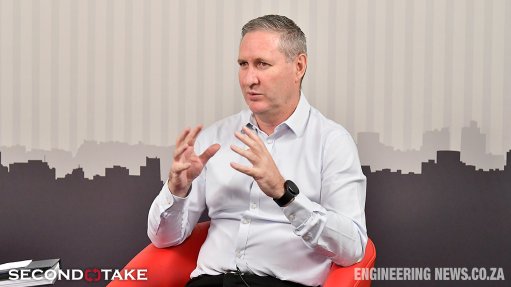NDSV’s NEC 3 & 4 FOR NEWBIES TIP SERIES
Free legal advice may sound like the start of another lawyer joke, yet here we are: we’ve developed an easy-to-follow ‘NEC 3 & 4 FOR NEWBIES’ series designed to see you build – rather than billed – more by the hour. That’s because less legalese can mean less legal fees when advice is quicker to decipher.
The contract management process can be complicated and time-consuming; more than that though, it can distract you from delivering projects on time and within budget. The good news is that at NSDV, we’re all about getting to the point without viciously poking you with it.
If you’re a Contractor or Employer, and if you like the idea of having your contracts simplified whilst being afforded protection against extremely costly contract inefficiencies, come and chat with us. In the meantime, here’re six tips to consider when using our government’s favoured contract.
TIP #1. UNDERSTAND THE PRICING MECHANISM
The NEC 3 or 4 is one contract with five pricing options, the most common being A or B. Option A is a lump sum contract used for design and build work. Option B is a remeasurement contract based on a bill of quantities, where the employer deals with the design.
For Option A, the contractor must align its activity schedule with its cash flow; the contractor is only paid once the activity is completed, and they carry the risk of a change in quantities.
Check: For cash flow purposes, contractors may break down the activity schedule into activities to be completed and claimed for monthly.
For Option B, the employer assumes the risk of a change in quantities; the contractor simply prices the bill of quantities and is paid monthly based on quantities worked, multiplied by rate.
Check: Small print matters; employers can shift the risk of the quantities onto the contractor in the bill. Check its preamble to learn who carries that risk, and whether missing or unpriced quantities are assumed to be included elsewhere.
NEC 3 or 4 is the Governments’ contract of choice; being able to successfully navigate it is as essential as their services.
TIP#2. SELECTING THE RIGHT X-CLAUSE TO LIMIT LIABILITY
During the tender phase, the Employer circulates a completed Contract Data Part 1 document to the Contractor, who in turn must complete Contract Data part 2 before a tender is submitted.
CHECK: When responding to the tender, the Contractor must still scrutinise the Contract Data part 1 (the part the Employer completed) as it contains X-clauses to the contract which are binding and could significantly impact your project.
The purpose of X-clauses is to limit and/or allocate risk and there are 15 possible X-clauses to choose from.
TIP: Contractor’s often do not realise that they are entitled to negotiate, delete, or include additional X-clauses instead of accepting the clauses that the Employer has chosen. Knowing this is the difference between being left vulnerable to unanticipated risks or being prepared for what may come.
X2 – Changes in Law, is particularly interesting. Here’s why.
Before 23 March 2020 and before The Government passed the Disaster Management Regulations in response to Covid-19, clause X2 seemed rather irrelevant.
Like a good hand sanitiser, X2 has since risen in importance as it determines which party carries the risk in the event of a change in legislation.
CHECK: If X2 is selected, then the Employer is liable to the Contractor for any increase in prices and/or time as a result of the change in legislation which plays out as a compensation event.
DOUBLE CHECK: If X2 is not selected, then the Contractor carries the risk resulting from a change in legislation. Simply put, the Contractor will be delayed and responsible for the accrual of penalties.
TIP#3. LOW ADMIN = HIGH PEOPLE COSTS
How to quantify a Contractor’s Compensation Event in relation to your People Costs
NEC3, in its infinite wisdom, tried to simplify the way in which Contractor’s claims were quantified. Their intentions were noble, in that they wanted to ensure that the Contractor was in the same position as before the Compensation Event occurred.
Yet the road to hell, it seems, is paved with incomprehension.
By trying to simplify the procedure, they introduced definitions such as Defined Cost, Fees, Shorter Schedule of Cost Components, and People Percentage Overheads. Construction veterans have never even heard of these terms.
What they should’ve simply said was that the Contractor is entitled to claim actual demonstrated costs.
So, what are actual demonstrated costs in relation to people?
- Contractors are entitled to claim for 3 categories of people:
- People who are directly employed by the Contractor and whose normal place of working is within the Working Areas
- People who are directly employed by the Contractor and whose normal place of working is NOT within the Working Areas but who are working in the Working Areas and
People who are not directly employed by the Contractor but are paid for by him or her according to the time worked while they are within the Working Areas
1 and 3 are relatively straightforward, as they involve the Contractor’s site team dedicated to the on-site project, as well as any consultants that may be hired by the Contractor to work on site.
2 is where it can get tricky, as it’s often harder to prove. It refers to the Contractor’s resources who are typically based at a head office, but have to come to site as a result of the compensation event.
That trickiness notwithstanding, the Contractor can claim for the total cost to company (People Costs) for the duration that its People resources will be involved in the compensation event, or for standing time as a result of the compensation event.
PRO TIP: The Contractor MUST provide documented proof of these costs. The simplest form of proof would be payslips and timesheets to demonstrate the loss the Contractor has incurred as a result of the compensation event, as well as either an employment contract or letter from HR demonstrating that they have been allocated to the project being claimed for.
Make sure that you have a method of recording and filing your People Costs in a manner that can be easily recalled for the quantification process. If I had a walrus, elephant, warthog or narwhal for every Contractor not able to prove their People Costs due to poor administration, I’d donate them all to the Johannesburg Zoo – on the condition that they rename it Tuskany.
If you’re not sure where to begin, a good starting point is the Shorter Schedule of Cost Components, unless you’ve agreed with the Project Manager to use the Activity Schedule or Bill of Quantities.
Like what you read here?
Visit NSDV for the other 3 tips in the complete series.
Comments
Press Office
Announcements
What's On
Subscribe to improve your user experience...
Option 1 (equivalent of R125 a month):
Receive a weekly copy of Creamer Media's Engineering News & Mining Weekly magazine
(print copy for those in South Africa and e-magazine for those outside of South Africa)
Receive daily email newsletters
Access to full search results
Access archive of magazine back copies
Access to Projects in Progress
Access to ONE Research Report of your choice in PDF format
Option 2 (equivalent of R375 a month):
All benefits from Option 1
PLUS
Access to Creamer Media's Research Channel Africa for ALL Research Reports, in PDF format, on various industrial and mining sectors
including Electricity; Water; Energy Transition; Hydrogen; Roads, Rail and Ports; Coal; Gold; Platinum; Battery Metals; etc.
Already a subscriber?
Forgotten your password?
Receive weekly copy of Creamer Media's Engineering News & Mining Weekly magazine (print copy for those in South Africa and e-magazine for those outside of South Africa)
➕
Recieve daily email newsletters
➕
Access to full search results
➕
Access archive of magazine back copies
➕
Access to Projects in Progress
➕
Access to ONE Research Report of your choice in PDF format
RESEARCH CHANNEL AFRICA
R4500 (equivalent of R375 a month)
SUBSCRIBEAll benefits from Option 1
➕
Access to Creamer Media's Research Channel Africa for ALL Research Reports on various industrial and mining sectors, in PDF format, including on:
Electricity
➕
Water
➕
Energy Transition
➕
Hydrogen
➕
Roads, Rail and Ports
➕
Coal
➕
Gold
➕
Platinum
➕
Battery Metals
➕
etc.
Receive all benefits from Option 1 or Option 2 delivered to numerous people at your company
➕
Multiple User names and Passwords for simultaneous log-ins
➕
Intranet integration access to all in your organisation




















